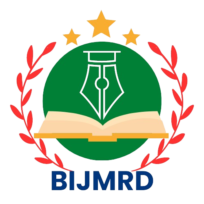Author: Arun Kumar Das & Dr. Pankaj Kumar Paul
DOI Link: https://doi.org/10.70798/Bijmrd/03070009
Abstract: A combination of online and classroom instruction is used, with the teacher facilitating learning with the help of online resources With the goal of combining the best aspects of both in-person and remote instruction, blended learning—also referred to as b-learning— aims to make learning more effective. Increased learning skills, easier access to material, better learning outcomes and pleasure, and chances to study alongside and instruct others are some benefits of blended learning for students. Because of its flexibility, customization, and increased engagement, blended learning— a mix of online and in-person instruction— is becoming more and more significant in the field of education. Students can access resources from any location, learn at their own speed, and take advantage of both in-person and virtual interactions. This method can boost student pleasure, enhance learning results, and develop critical digital learning abilities. A range of media, including web-based, video-based, and mainframe-based, can be used to achieve blended learning. Because course material, learning objectives and student profiles vary, there is no set formula for using technology in blended learning programs.
Keywords: Blended Learning, Students, Implementation, Benefits, Features.
Page No: 84-93
